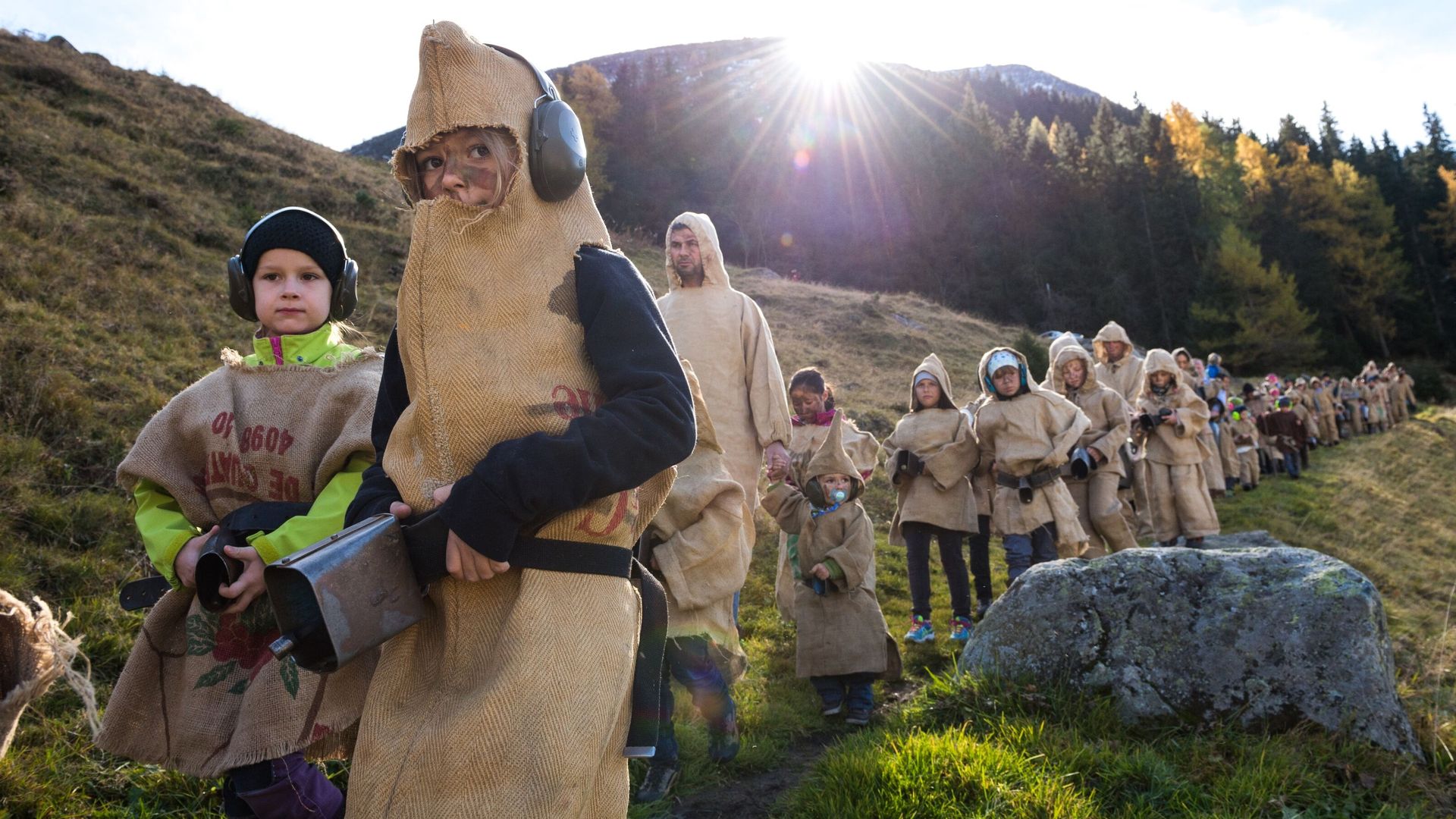The fascination of the "Woldmanndli" in Andermatt
Andermatt, October 22, 2025
When, at the end of October, the dull ringing of bells, the blaring of goat horns and deafening noise break the mountain silence, it's that time of year again: the ‘Woldmanndli’ are making their way from the Gurschenwald forest to Andermatt. A custom that is deeply rooted in history and yet inspires enthusiasm anew every year.
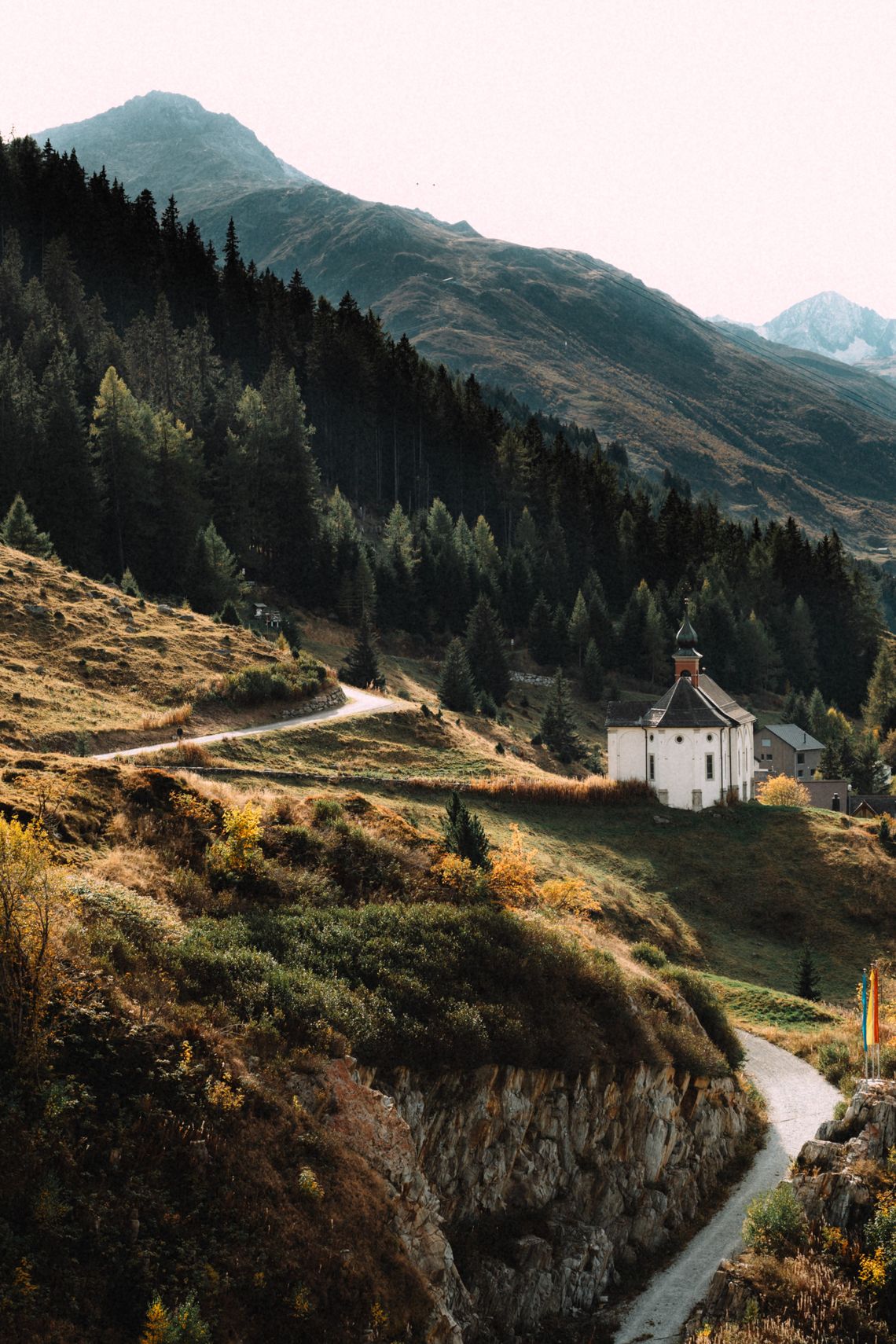
The path from the Gurschenwald forest to the village leads through the autumnal mountain landscape.
In the golden autumn light, young and old set off dressed as Woldmanndli.
A day dedicated to tradition Jacqueline Russi gives us an insight into this special event. For years, she and her family have been actively participating in the parade – wrapped in coarse jute sacks, with soot smeared on their faces and heavy cowbells in their hands. ‘The special thing is this sense of community,’ she says. ‘Old and young walk side by side. You can feel the history and, at the same time, pure joy.’ A custom with roots in the Middle Ages
The origins of the Woldmanndli procession in Andermatt date back to 1397, when the Bannbrief placed the Gurschenwald forest under special protection. At that time, the ‘Woldmanndli’ symbolised the workers who tended the forest and protected the village from avalanches. Today, around a hundred men, women and children parade through the village every year as forest men. Until the 1960s, the custom was rather loosely organised. It was Willi Bomatter-Furger who gave it a fixed form with a parade and a communal soup meal. Since 2005, the St. Nicholas Organisation has ensured that the tradition remains alive and is passed on from generation to generation.
Autumn is here
Nature is ablaze with golden colours, the air is fresh and the low sun bathes the mountains in atmospheric light. Jacqueline and her family begin their preparations a few days before the parade: the scratchy jute costumes are taken out of the old chest. Do the costumes still fit? Does a new one need to be sewn or does something need to be repaired? Luckily, all the costumes still fit. Only the homemade ‘Bockähourä’ is unfortunately no longer there. It probably found a new owner last year.
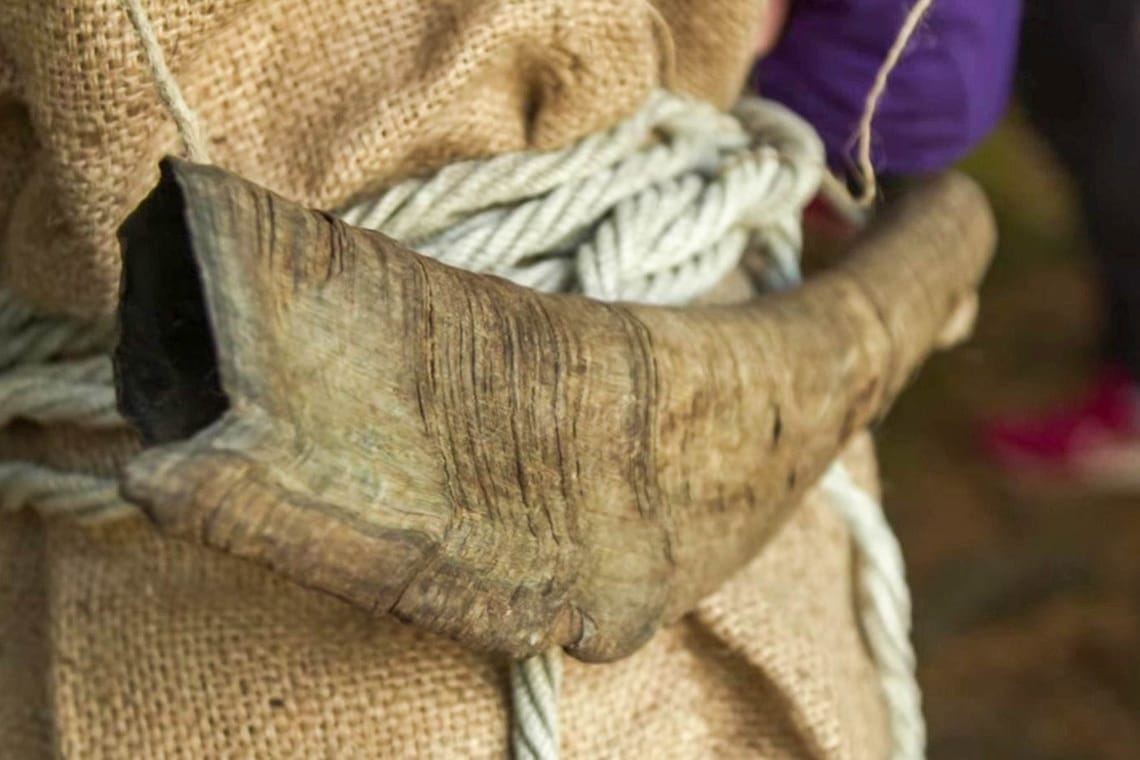
Rustic, rough and powerful – the horn is a symbol of the custom and amplifies the haunting sound of the parade.
The first chime of the bell
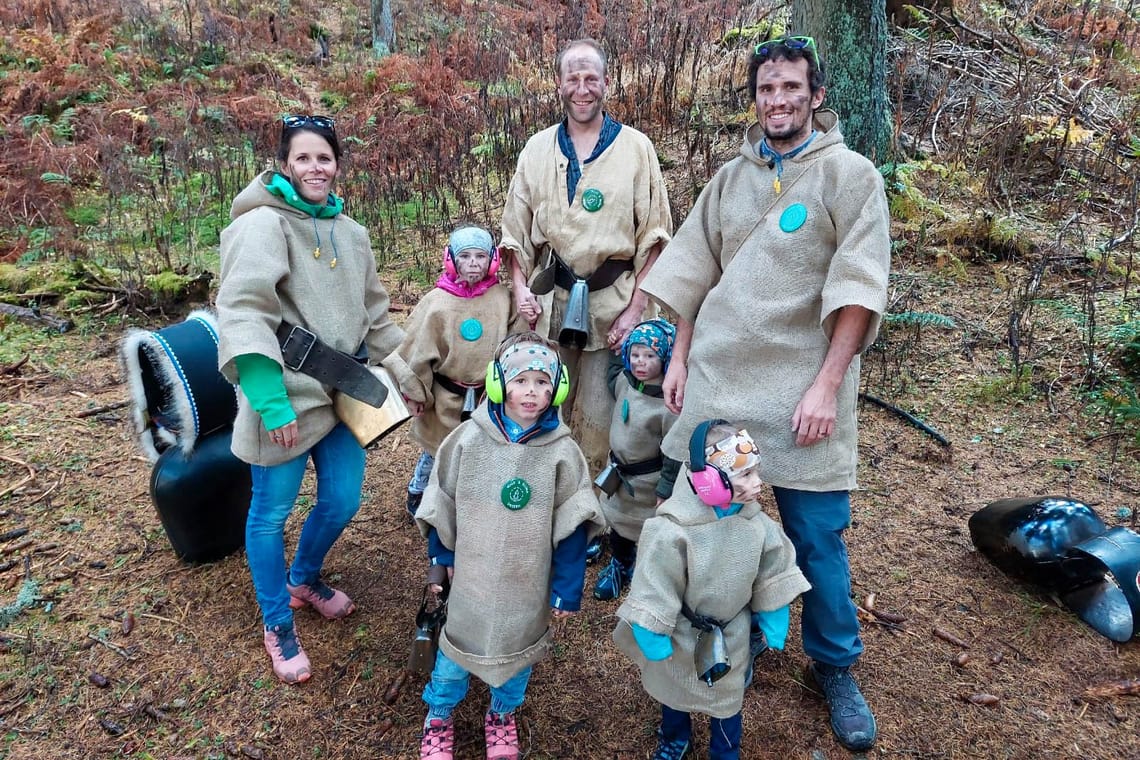
The tension mounts: the church is about to strike 1 p.m. and the wait is over for Jacqueline's family.
At 1 p.m. sharp, the first bell tolls – everyone falls into line. Step by step, the crowd moves towards the village, where numerous spectators are waiting at the roadside. Between the houses, it gets even louder, the noise pierces you to the core and gives you goose bumps. The men line up at the back, often with a smile on their faces. The rhythmic ringing of the heavy cowbells echoes through the alleys, while children make themselves comfortable on their parents' shoulders or even take a nap.
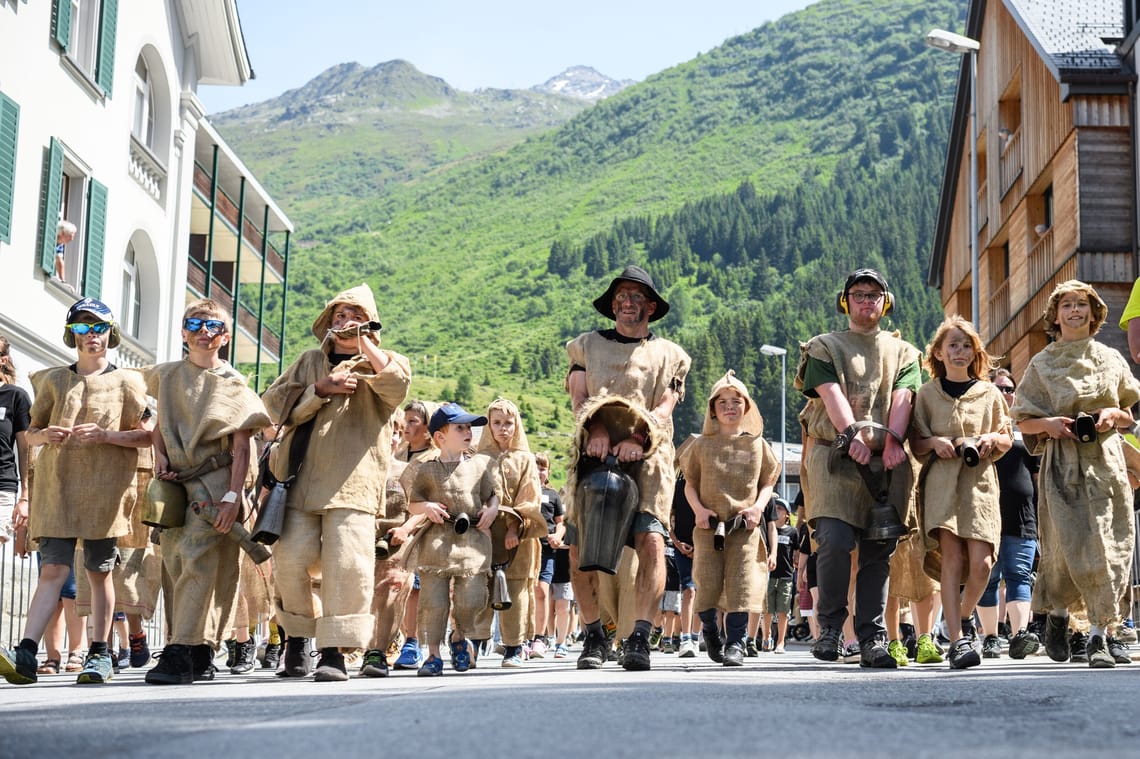
Pure goosebumps! The procession ends in the middle of the village, where all participants receive a hot soup – donated by a different sponsor each year. ‘It's just part of the tradition,’ says Jacqueline. ‘It's a thank you that shows the bond between the village community, the organisation and the participants.’ And it's not uncommon for the evening to continue in the pubs afterwards – just as it should be at the Andermatter Chilbi.
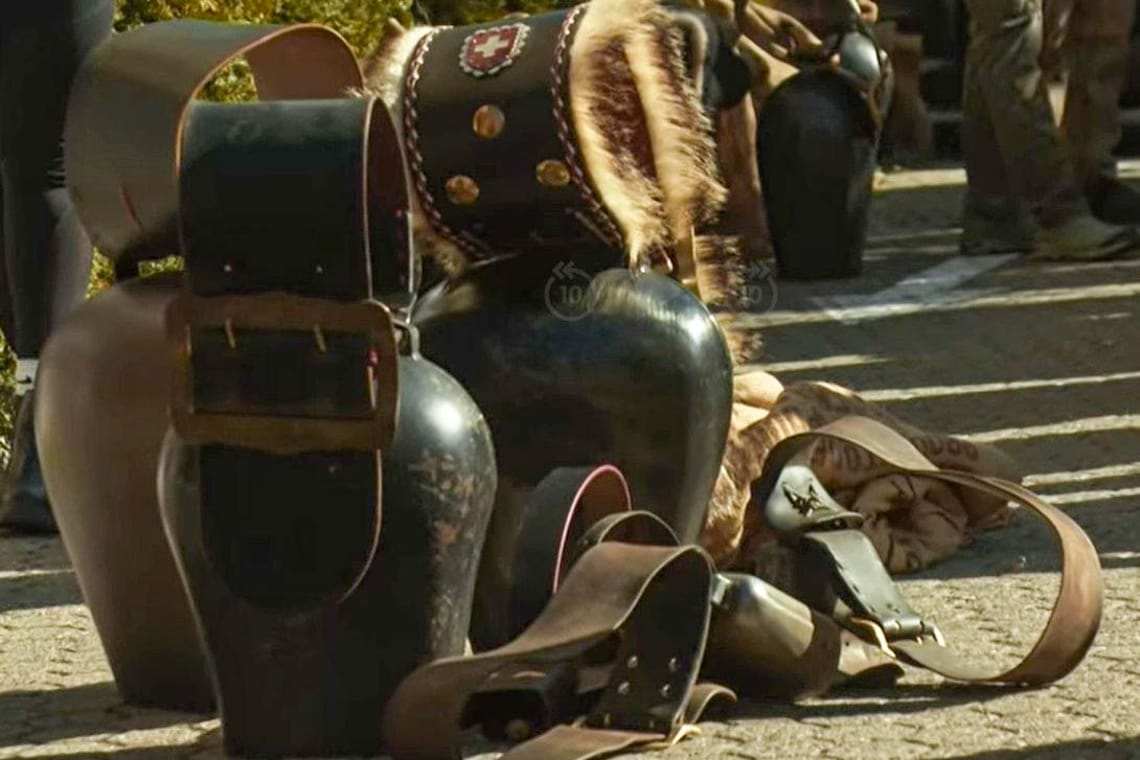
Heavy, loud and unmistakable – their sound fills the Ursern Valley and makes the parade an unforgettable experience.
An experience for guests and locals alike The Woldmanndli parade is more than just a spectacle. It is a piece of identity, a living cultural heritage and an event that combines tradition and modern festive culture. Anyone who has ever been there can feel that in Andermatt, history is not a distant past, but a living present.
